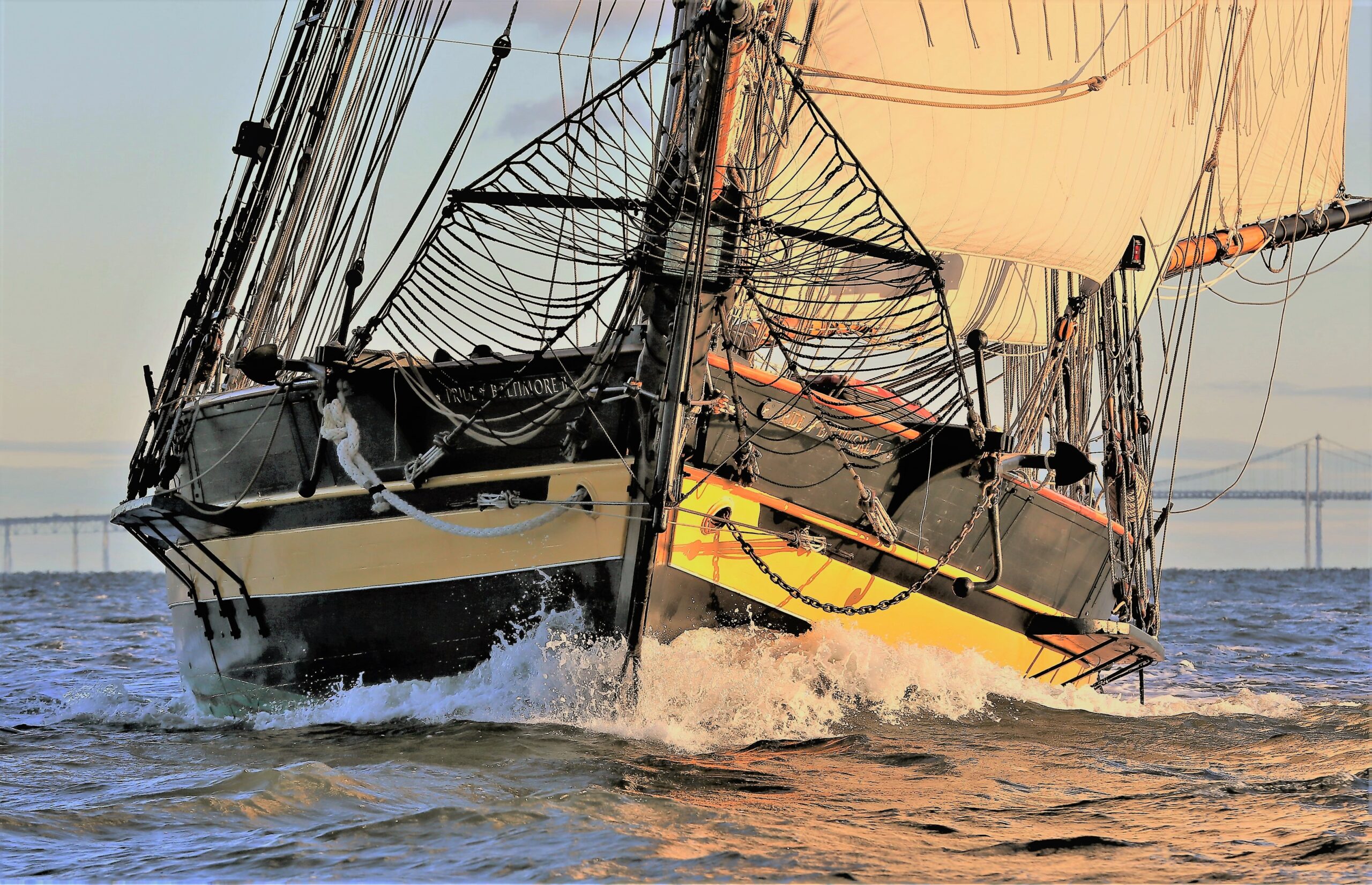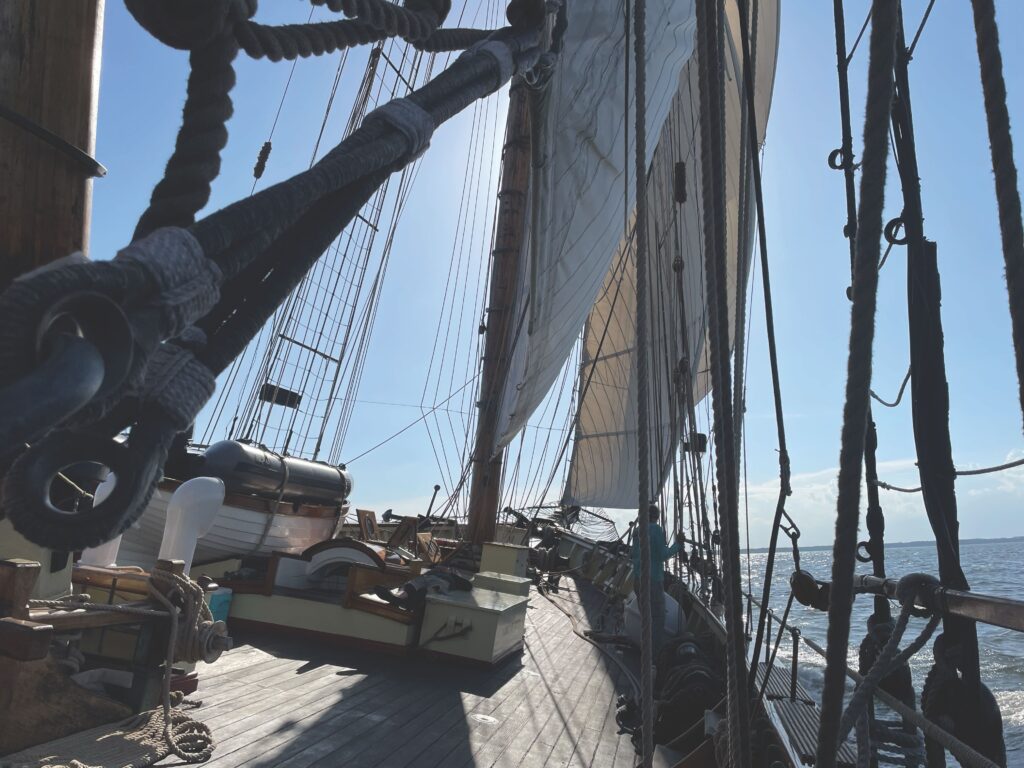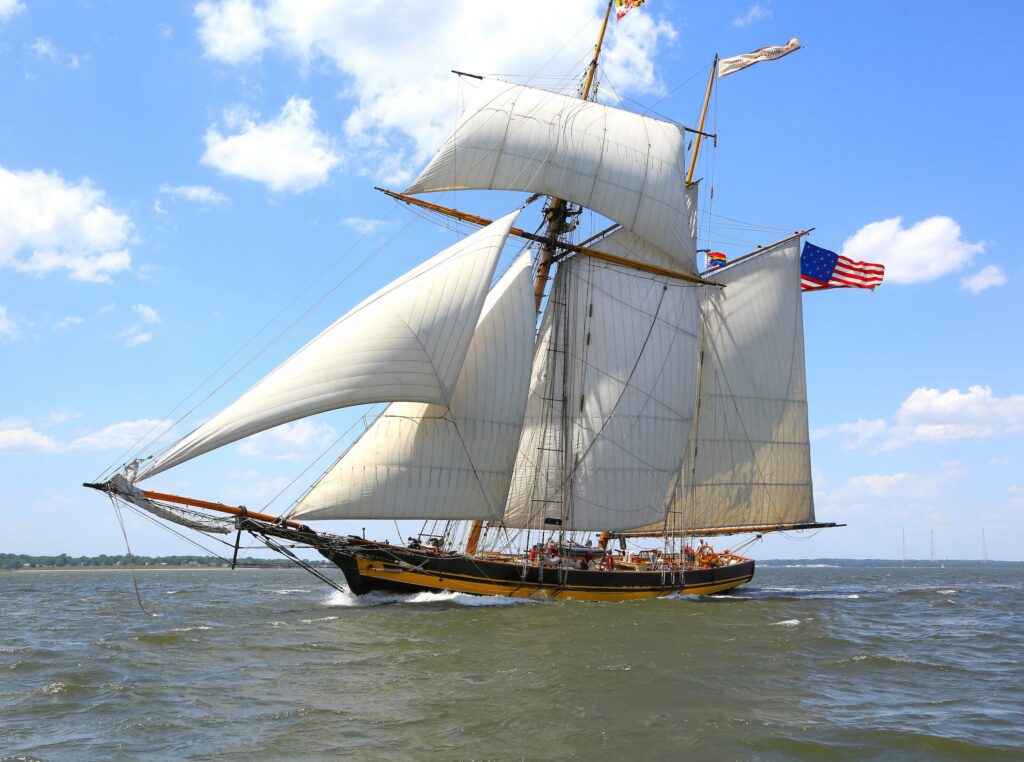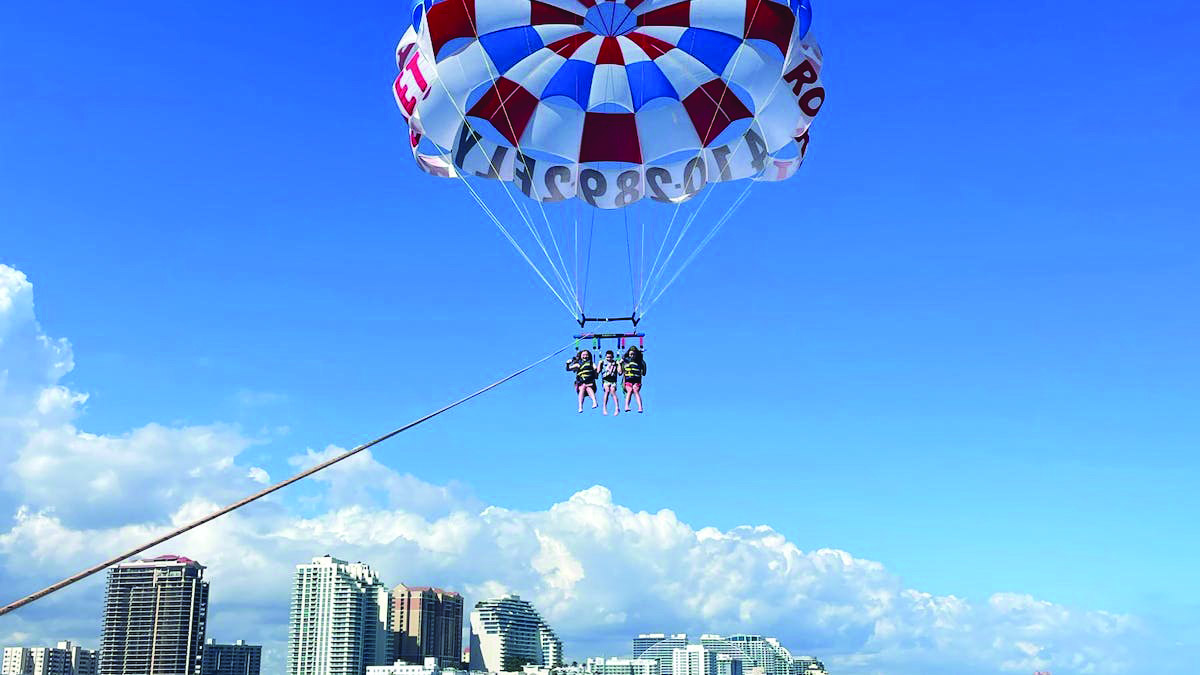
Traveling hundreds of miles by air, rail, and road just to perform manual labor isn’t exactly the archetype of a relaxing vacation. Still, I guarantee you’ll never sleep better while sweating through your clothes than on the Pride of Baltimore II.
To preface this experience, I must tell you a little about myself. I was born and raised in South Florida, which has given me a tendency to be in, on or around a body of water at any given moment. It feels safe to say that I have been a witness to nearly every manner of waterborne experience.
I know the joy of that first bite of a Pub-Sub after the sun has taken its toll. I know the blind rage of when a fishing buddy snags a hook in your shoulder. I’ve been thrown from my fair share of tubes and capsized a Sunfish or two. In short, I’ve been there; I’ve done that.
Yet sailing on The Pride of Baltimore II felt like my first time on the water. Driving to her berth in Baltimore harbor, you can catch glimpses of her two masts, the rigging taught and ready. Stepping aboard, you feel like a true landsman pressed into service for His Majesty’s Royal Navy. The miles of rigging overhead and the lines coiled away neatly on deck are more than enough to get any sailor’s mind racing.
The captain and full-time, live-aboard crew give you the rundown on how the ship operates and a quick deck tour. Down below, you’re shown your cabin, which is merely a couple of bunks and a small table. If your cabin is on the leeward side of the ship while underway, the waves gurgle past while you get some sleep.
The foundation of the ship’s operation is the watch system; the crew is divided into three “watches” and charged with handling the vessel during designated four-hour periods. My watch began at noon and midnight. During your watch, you are also responsible for “boat checks.” Any wooden ship leaks in some capacity, so every hour, on the hour, you check all of the compartments to ensure the water levels are acceptable. The information on the two massive, loud, hot engines and the weather conditions must also be recorded.
I had the good fortune of sailing during this year’s Governor’s Cup Yacht Race, which starts near Annapolis in the Chesapeake Bay and ends at St. Mary’s College of Maryland, situated on an offshoot of the Potomac River. The Pride II was set to be the ceremonial starter of the race.
Although we weren’t technically racing anybody — there weren’t any other vessels in our class — the captain and crew were still taking it seriously. The Great Chesapeake Bay Schooner Race was right around the corner and they wanted to be sharp for the occasion.
Soon, the captain called “ready about,” which was promptly repeated by the crew. Soon, there was a flurry of limbs as we all scurried to the halyards. Once in position, the captain called “heave away,” and we responded in our sing-song tone before it was replaced by the sounds of labored breathing.
The physical space when heaving isn’t abundant, and you need a lot of manpower, so you’re pressed up right next to the sailors on your left and right. It creates an immediate intimacy I still don’t have (or want to) with most of my longtime friends. The last two feet or so of line is the most resistant, so an age-old technique is required to get those final inches tied down. The whole contingent throws their entire body weight away from where it is will be tied down and swings themselves in one fluid motion towards the cleat once they’ve created an inch or two of slack. That process is repeated until the officer of the watch is content.

I neglected to put on gloves before that first sail was raised — I didn’t think my hands would get torn up too severely after one brush with the twine. I was wrong. I had a callous the size of a peanut M&M as soon as my hand left the rope. Learn from my mistake.
Before getting further into the race, it is essential to note that the Pride II would usually motor out of the bay using her twin engines when facing a headwind to go on one of her longer journeys.
Headwinds make for slow progress due to the physics of sailing, and the nature of tall ships only amplifies that. To make any progress sailing into the wind, you must tack or zig-zag your way towards your destination. Tacking in a tall ship is hard work; readying the lines, bracing the yards, and setting the sheets all require quite a bit of elbow grease. The shallow waters and confines of Chesapeake Bay amplify that even further.
Once the race had begun in earnest, we were tacking every 20 to 30 minutes. The soon-to-be familiar call “ready about” would come, a predictable flurry of activity, and then the waiting for the next call from the captain. “Helms a lee” would ring out, meaning the captain had initiated the maneuver, and the crew would get to work. The fore staysail, jib, and flying jib would be tacked over first, then the call to “haul away” would come again, and the braces would be swung around for the topsails.
By the time the sun began to set and the ship’s cook called for the stood-down watches to the mess, we had all earned our supper. One of the deckhands remarked that we had tacked more that day than they had on their recent trip back from Bermuda.
As the sun set over the Chesapeake, cruising along at eight or nine knots under the canvas, you could tell everyone was thinking some version of “this is pretty cool.”
Eventually, the stars came out on a moonless night. As the air cooled, the wind started to pick up, and I could tell by the captain’s changing demeanor that he was calculating how much canvas we needed to strike down. If the wind picked up too much too quickly, expensive things with thousands of pounds of tension would start breaking, which gets dangerous quickly. He needed to call all hands on deck.
As the gusts gained power, he couldn’t delay it any longer, and the call came to start striking down canvas.
The more experienced deckhands made their way out onto the bowsprit and up into the shrouds to stow away the jibs and fore topsail, respectively. I couldn’t help but wonder how many sailors over the years had climbed aloft and never came down in similar conditions. Today, the crew wears ample safety gear, but they weren’t so lucky a couple of centuries ago.
Stowing the sails is just as physical as raising them in perfect conditions. It is a much bigger ask in the darkness of night and suddenly powerful winds. With the manpower divided, it requires more of your strength to haul, of which I already have very little to give.
I couldn’t tell you exactly how long it took us to stow away the sails, but I can tell you that every moment felt like an eternity. Something about the all-encompassing darkness, my own fatigue and the singular unity with which we worked made it feel like we were the only beings left in existence.

After that last bit of exertion, I headed down below and tried to sleep in the hot, heavy August air.
My slumber was short-lived — it was soon time to start the midnight watch. We were set to keep our course for basically the whole four hours. We had just one tack to perform shorthanded while the other two watches slept, which was a bit of a struggle. Boat checks were in order, so we made our observations for the ship’s log and signed our names.
Back on deck, after a long lull, the helmsman turned to me and asked if I wanted to man the ship’s wheel until the watch ended.
Of course, I accepted, the darkness hopefully concealing the embarrassing amount of glee I must’ve been exuding. Standing at the helm of a tall ship had me wide awake; every neuron in my brain was firing a full broadside.
I can’t remember a time before I was ensorcelled by the golden age of sail and the majestic, powerful ships that symbolized that era. Those ships represented so much to so many; they symbolized the state’s authority and an avenue for social mobility, and for hundreds of thousands of people, they were home.
For centuries, this way of life dominated the world, and you would scarcely know it today. There are so many historical landmarks scattered across the globe, and there are comparatively few monuments to naval history, such as Pride II. There is something unique and special about tall ships like the Pride II. It is a rare thing to experience the past; at times, it seemed as if I could hear whispers of history in the crashing waves.
But as I stood at the helm, eyes on the horizon, one thought kept recurring: “This is a great adventure.”





